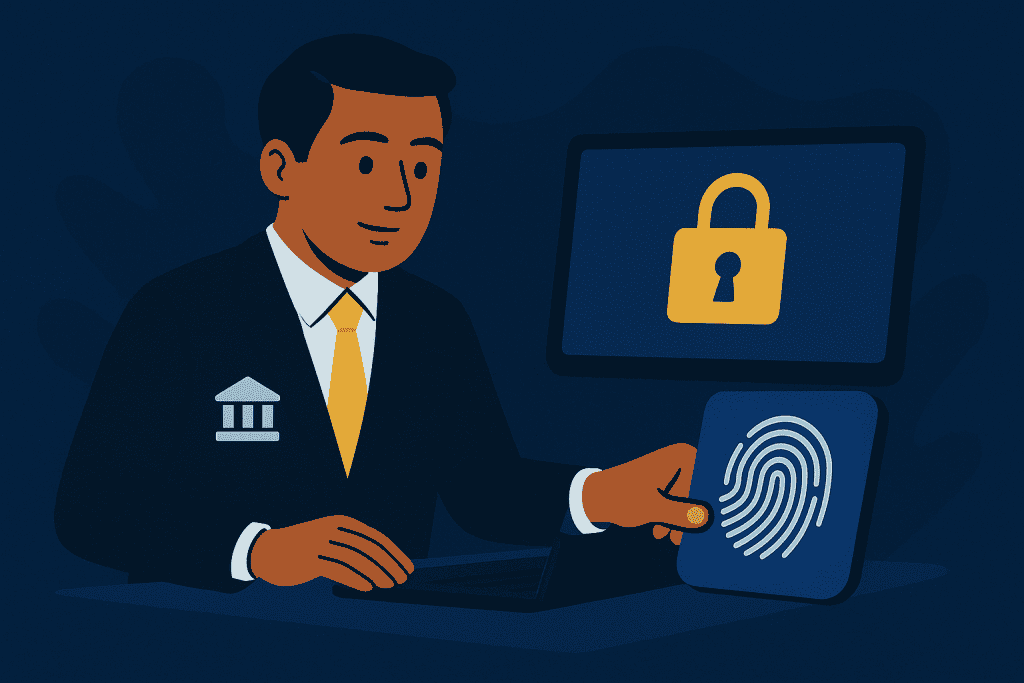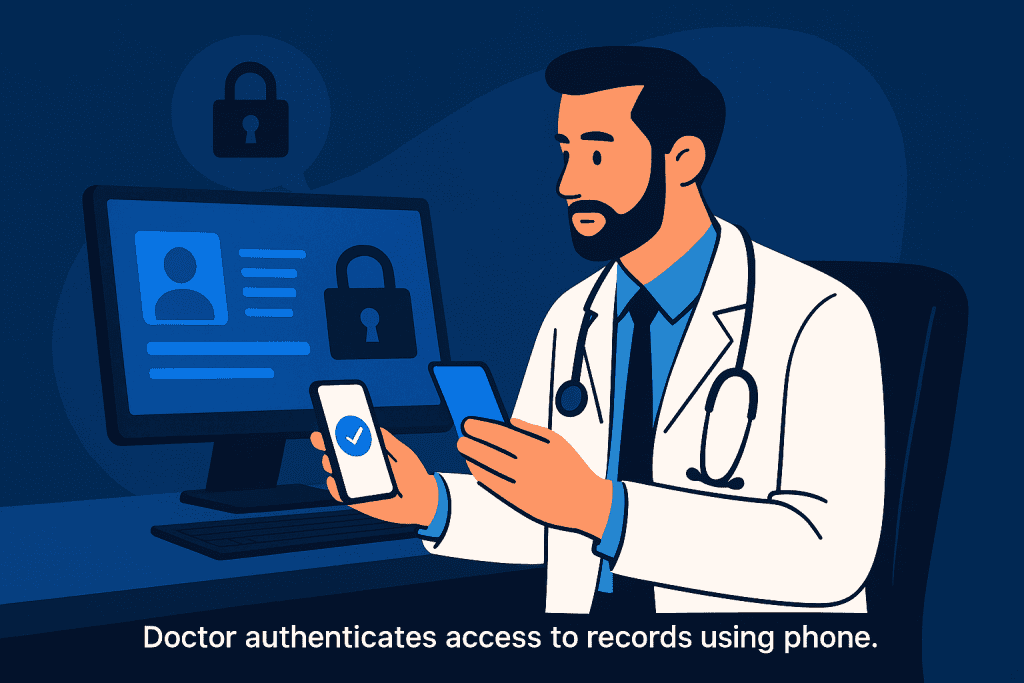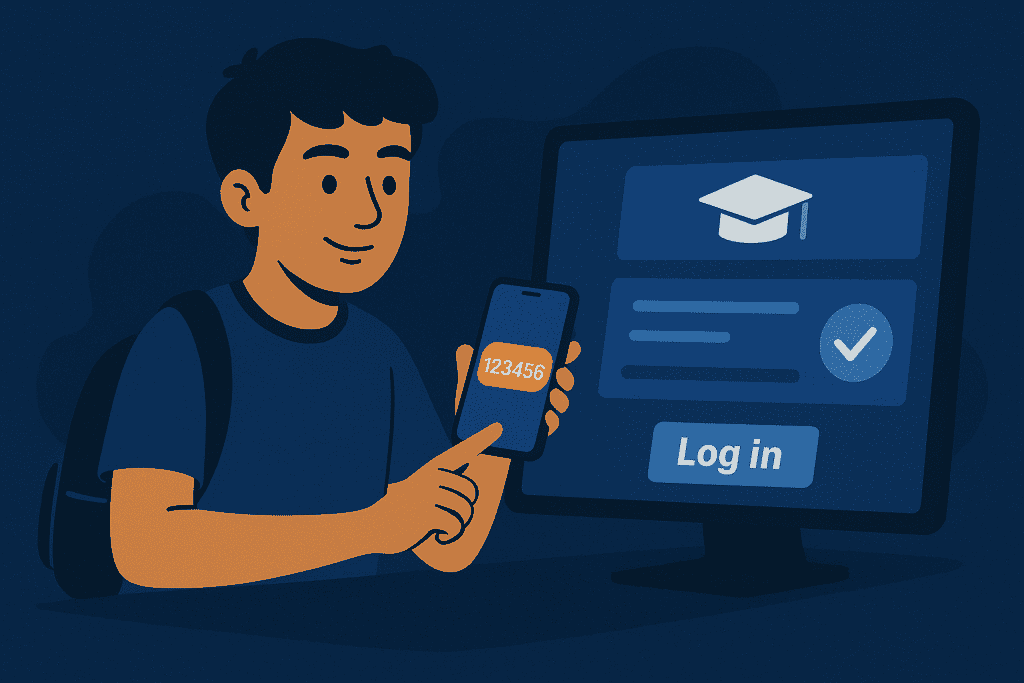Passwords were once the main defense against online attacks. But today, that’s no longer enough. Breaches, phishing scams, and credential stuffing attacks flood the headlines almost daily. If a hacker gets your password, they can slip into accounts undetected. That’s why businesses, governments, and even individuals now rely on Multi-Factor Authentication (MFA)—a security method that adds extra steps to verify identity.
According to Microsoft, enabling Multi-Factor Authentication can block over 99% of automated account compromise attempts. Cisco explains that MFA combines different factors—what you know, what you have, and what you are—to build stronger barriers against hacking. IBM emphasizes that MFA is one of the most effective tools for defending against modern cyber threats, while Fortinet notes its growing role in compliance frameworks worldwide. In today’s digital landscape of remote work, cloud apps, and even deepfakes, Multi-Factor Authentication has gone from optional to essential.
What is MFA
MFA, or Multi-Factor Authentication, is a method that requires two or more ways to verify identity before granting access. Unlike traditional logins that rely only on a password, Multi-Factor Authentication combines multiple factors to strengthen security.
The three main categories are:
- Something you know – passwords, PINs, or security questions.
- Something you have – smartphones, smart cards, or hardware tokens.
- Something you are – biometrics like fingerprints, face scans, or voice recognition.
When at least two factors are combined, attackers face higher resistance. For example, even if they steal a password through phishing, they’d still need your phone or fingerprint to get in. This layered approach is why Fortinet calls Multi-Factor Authentication a “cornerstone of modern cybersecurity.”
Breaking Down MFA
Multi-Factor Authentication works by layering defenses, and each type of factor contributes something unique:

- Knowledge Factors – Passwords remain the most common, but they’re also the weakest. Users often recycle them or fall for phishing. That’s why MFA rarely stops there.
- Possession Factors – This includes codes sent to a phone, app-based tokens, or physical devices like YubiKeys. These are much harder for attackers to steal remotely.
- Inherence Factors – Biometrics add a personal touch, since fingerprints or facial features are unique. IBM notes that biometrics are becoming mainstream in banking and healthcare.
- Adaptive Authentication – This advanced form evaluates context, like device health, IP address, or login time. Cisco calls this risk-based MFA—stronger protection when something looks suspicious, less friction when things look normal.
Example: Imagine you’re logging into your email from home. You enter your password and approve a push notification on your phone. Now picture trying to log in from a different country—MFA may require biometric confirmation or block the attempt entirely.
Microsoft stresses that usability is key. If Multi-Factor Authentication feels like a burden, users resist it. That’s why modern MFA systems aim for balance: powerful security with minimal disruption.
History
The concept of using more than one verification factor isn’t new. In physical security, people used badges and keys together long before the internet. In digital form, Multi-Factor Authentication has steadily evolved.
| Year | Milestone |
|---|---|
| 1980s | Enterprises adopt hardware tokens for secure logins |
| 1990s | Banks roll out two-factor authentication for online accounts |
| 2000s | SMS codes become common for consumers |
| 2010s | Authenticator apps and biometric logins gain popularity |
| 2020s | Risk-based MFA, passwordless, and FIDO2 standards emerge |
OneLogin explains that early MFA relied heavily on physical tokens. By the 2000s, SMS-based MFA was widely used but soon criticized for being vulnerable to SIM-swapping. Today, the industry pushes for phishing-resistant MFA like app-based tokens and FIDO2/WebAuthn standards that rely on cryptographic keys instead of codes.
Types
Different models of Multi-Factor Authentication exist, and each fits different needs:
SMS and Email-Based
Users receive one-time codes via text or email. It’s simple but also vulnerable to phishing and SIM-swapping. Many companies now use it only as a backup.
App-Based
Authenticator apps like Microsoft Authenticator or Google Authenticator generate time-based codes or send push notifications. These are more secure than SMS and widely used across industries.
Hardware Tokens
Physical devices such as YubiKeys or RSA tokens generate codes or use cryptographic keys. Banks and enterprises favor them for their high security, though they can be costly to distribute at scale.
Biometric Multi-Factor Authentication
Fingerprints, facial recognition, or voice patterns provide unique identifiers. Healthcare and government agencies use biometrics for both speed and precision. However, privacy concerns remain about storing biometric data.
Adaptive Multi-Factor Authentication
This advanced model evaluates risk factors in real-time—like device health, network location, or login behavior. Fortinet emphasizes that adaptive MFA delivers security without overwhelming users with constant challenges.
| Type | Example | Strength |
|---|---|---|
| SMS/Email | One-time passcodes | Easy, but vulnerable |
| App-Based | Authenticator apps | Strong, user-friendly |
| Hardware | YubiKey, RSA token | Very strong, resilient |
| Biometric | Fingerprint, face scan | Unique, convenient |
| Adaptive | Risk-based checks | Flexible, intelligent |
How does it work?
Here’s how Multi-Factor Authentication typically operates:
- A user enters their username and password.
- The system requests a second factor (e.g., code, push, or biometric).
- If both factors align, the system grants access.
- If one fails, the system denies entry or asks for further proof.
Cisco explains that Multi-Factor Authentication not only blocks external attacks but also stops insider misuse. For example, if an attacker steals credentials through phishing, Multi-Factor Authentication stops them unless they also control the second factor.
Pros & Cons
Like any tool, Multi-Factor Authentication has its strengths and weaknesses.
| Pros | Cons |
|---|---|
| Stops most phishing and brute-force attacks | SMS-based MFA can be hijacked |
| Blocks access from stolen passwords | Hardware tokens add costs |
| Strengthens compliance with regulations | Users may resist extra steps |
| Scales across cloud and hybrid systems | Requires maintenance and updates |
| Builds trust with customers | Can impact usability if poorly designed |
Uses of MFA
Multi-Factor Authentication isn’t just theory—it’s in practice everywhere.
Healthcare

Hospitals deploy MFA to protect patient data and comply with HIPAA. Biometric logins help doctors quickly access records without compromising care.
Finance
Banks pioneered MFA through tokens and now rely on mobile push and biometrics. This not only prevents fraud but also reassures customers their money is safe.
Education

Universities use MFA to secure research data, online courses, and student accounts. With remote learning, Multi-Factor Authentication ensures students and staff log in securely from anywhere.
Government
Agencies use MFA as part of zero trust frameworks. Every login, even internal, requires multiple checks, protecting against espionage and insider misuse.
Retail and Consumer Apps
E-commerce platforms rely on MFA to secure customer accounts. Loyalty programs, which are frequent targets for attackers, are better protected with MFA.
Remote Work and Cloud Services
With employees working from home, Multi-Factor Authentication ensures secure access to cloud apps and VPNs. IBM stresses that remote work without MFA leaves organizations wide open to breaches.
MFA is also powerful against modern tricks like deepfakes. Even if an attacker impersonates a CEO in a video, MFA requires additional checks before access is granted, blocking manipulation.
Conclusion
Passwords alone cannot protect against today’s sophisticated attacks. MFA stands out as one of the most effective and accessible defenses in the cybersecurity world. From stopping hacking attempts to defending against cyber threats like phishing and deepfakes, MFA offers layered protection.
As Cisco and Microsoft stress, MFA is no longer optional. It builds trust, supports compliance, and ensures organizations can innovate without constant fear of breaches. For individuals, turning on MFA for email, banking, and social media accounts is one of the simplest yet strongest steps for safety.
In short, Multi-Factor Authentication combines simplicity and strength, making it a game-changing security practice for a digital-first world.
Resources
- OneLogin. What is MFA?
- IBM. Multi-Factor Authentication
- Microsoft Support. What is Multifactor Authentication
- Fortinet. Multi-Factor Authentication
- Cisco. What is Multi-Factor Authentication?
